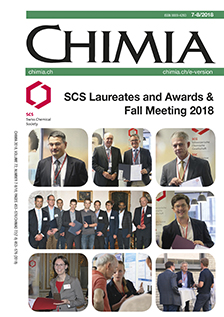Applications and Prospects for Triplet–Triplet Annihilation Photon Upconversion
DOI:
https://doi.org/10.2533/chimia.2018.501Keywords:
Excited state, Photochemistry, Triplet–triplet annihilation, UpconversionAbstract
Triplet–triplet annihilation photon upconversion (TTA-UC) is a photophysical process in which the energy of two photons are combined into a single photon of higher energy. While this strategy has been recognized in applications ranging from bioimaging to solar energy conversion, its uses in synthetic organic chemistry have not been extensively developed. Here, we present a short tutorial on the theoretical underpinnings and the design principles of TTA-UC systems. Selected applications are then discussed to highlight key features of the TTA mechanism, along with a prospective discussion of the potential of these mechanisms to enable innovation in photocatalysis, methods development, and synthetic organic chemistry.Downloads
Published
2018-08-22
Issue
Section
Scientific Articles
License
Copyright (c) 2018 Swiss Chemical Society

This work is licensed under a Creative Commons Attribution-NonCommercial 4.0 International License.
How to Cite
[1]
M. P. Rauch, R. R. Knowles, Chimia 2018, 72, 501, DOI: 10.2533/chimia.2018.501.







